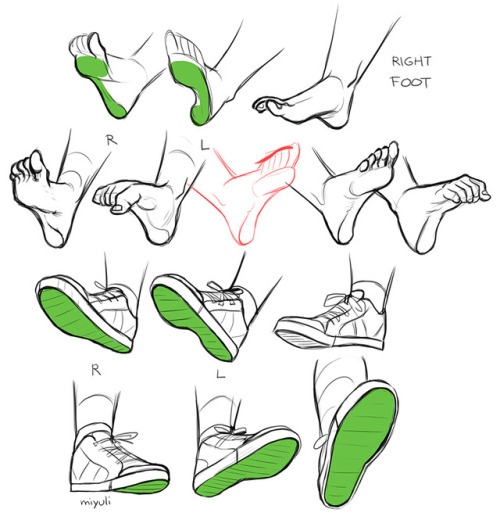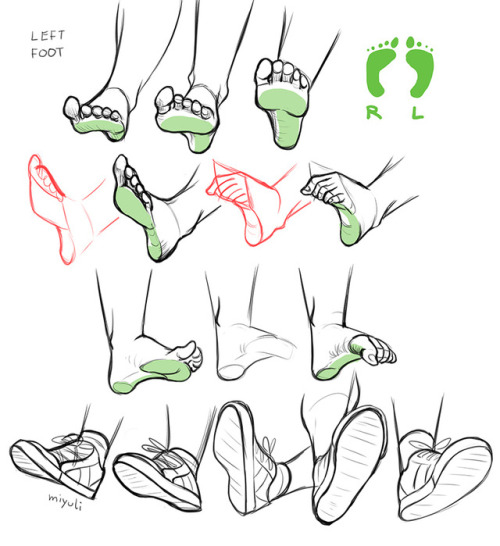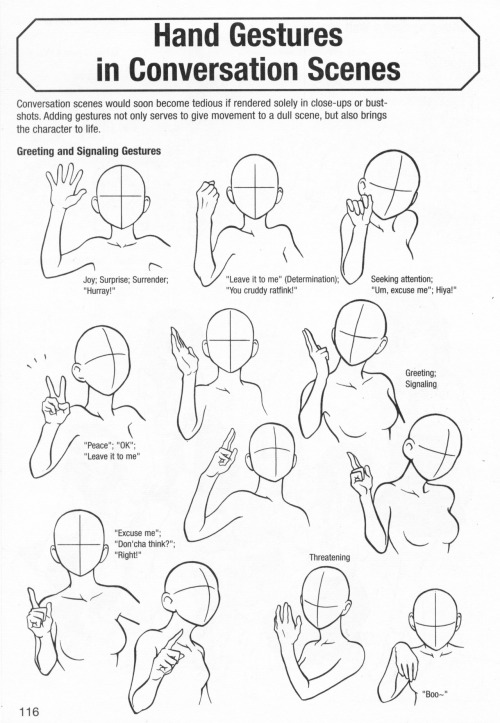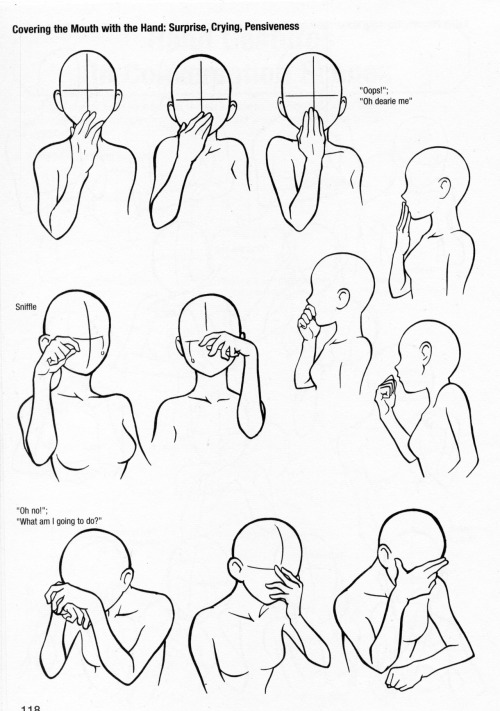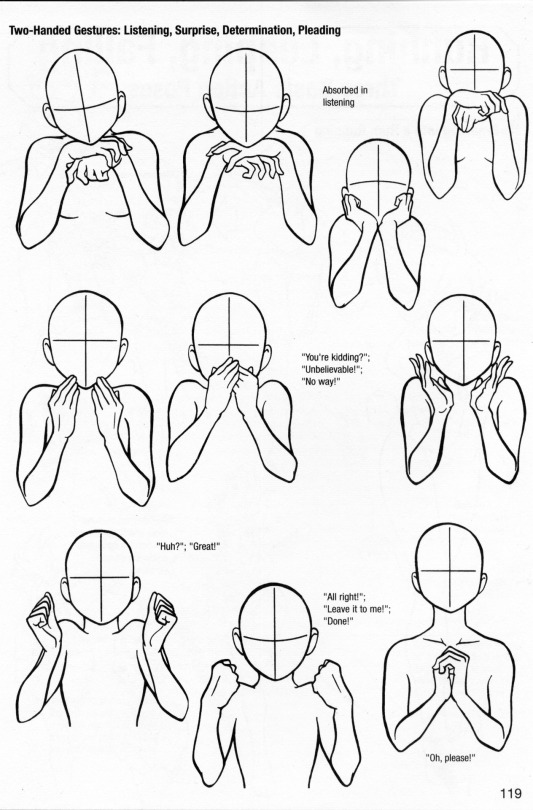Hi! I Really Love Your Art And I'm Wondering If You Should Show Me How You Color And Shade. Thanks! :)
Hi! I really love your art and I'm wondering if you should show me how you color and shade. thanks! :)

tadaaaaa!
More Posts from Artrefforsteph and Others

:) hope you like it!
my current brushes i used a lot here: painting brush(speckles), the ones i called sim
https://dl.dropboxusercontent.com/u/12795238/sim2014_23_08.abr
enlarged tutorial images:
https://dl.dropboxusercontent.com/u/12795238/wald%20tut%20large%20images.jpg
The lip sync tutorial they DON’T give you
I mentioned on twitter that I wanted to do a lip sync tutorial and immediately got some people who were interested so I put one together real quick!
I’m going to use a bit of unfinished lip sync from my taz animated part as reference. They’re just gifs so no sound, but you should still be able to tell that he’s saying “I’d say a solid B… Solid B minus.”
Anyone who’s looked up how to do lip sync has seen phoneme charts. Phonemes are just the shape your mouth makes when you make certain sounds.

When you do lip sync, you want some kind of reference to make sure it’s right
What’s easiest is to say it yourself and pay attention to the shapes your mouth is making. Since you’re going frame by frame, your audio is slow enough that you can make each shape slowly and distinctly and you can get each individual phoneme down in the animation.

Don’t do this.^
An easy way to tell if you’re animating lip sync wrong is if you run out of frames to make each shape. You don’t need them! Making each shape is unnatural. People talk quickly and the mouth doesn’t have the time to get into each shape. They blend together, sometimes to the point where the shape doesn’t change at all!

Not only does the 2nd gif take less frames and energy to make, it’s more relaxed, it looks less distracting, and his lips are much easier to read!
These are reference charts to show the differences more clearly


This is the difference between getting swallowed up in every last detail and paying attention to reality.
What matters more than hitting every syllable is making it look natural and flow with the acting. That’s why anime mouth flaps can work so well. A strong pose through the whole body matters more than one mouth shape.

Keep Your Distance - Submitted by SeesawSiya
#8c1664 #d53b23 #c4883f #ffea8a #448c5a #9cd1fb
Hey! i like how you draw hands, can you do a guide on how you do it???????
I looove drawing hands, but they're as fun to draw as they are difficult 👌👏

Usually when I draw, I don't go for perfect realism/anatomically correct, I mostly follow whatever makes the drawing look good, with exaggerated shapes, sharp angles, etc.


Drawing with references is the best advice I can give you!
When I struggle to draw hands I usually just look at my own hand and try to copy it (I have a small mirror next to my computer to make it easier), it works, but it's not always the best option. If you want to improve quickly, find some pictures and practice by drawing them!
A lot of websites have a built-in timer for studies, here is the one I used for this one for example:

So yeah, practice practice practice! The more you draw, the better you'll get!

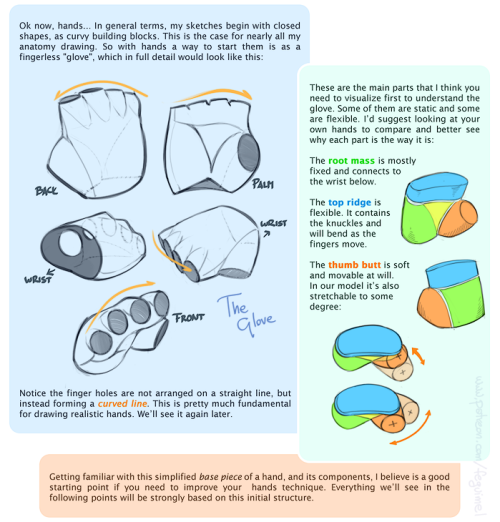
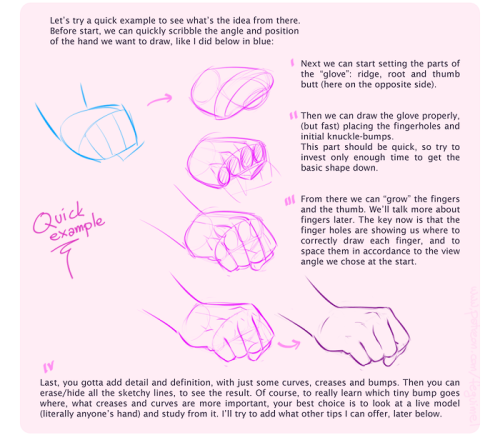
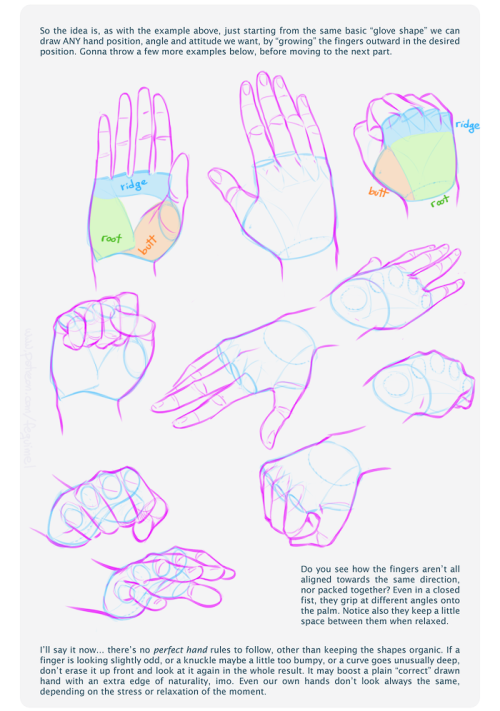
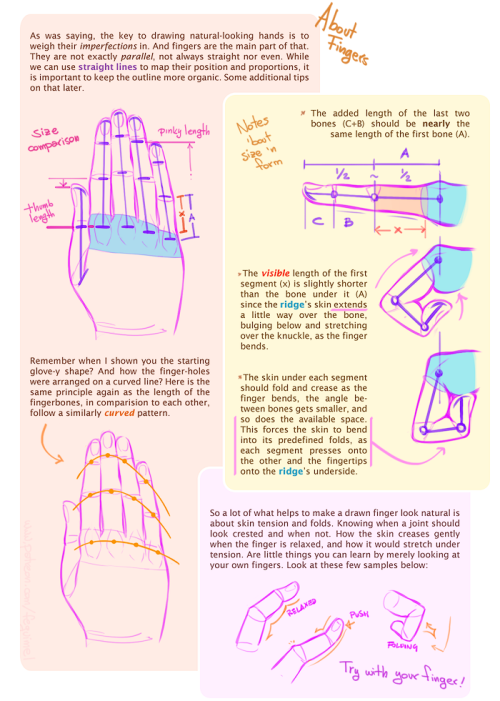
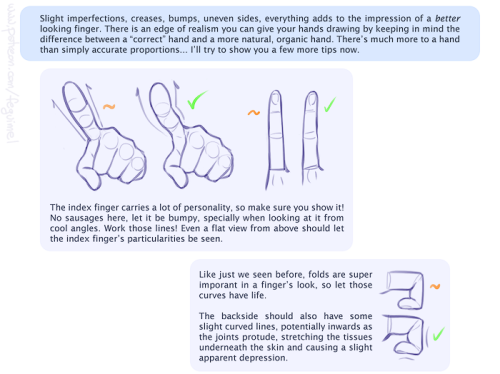
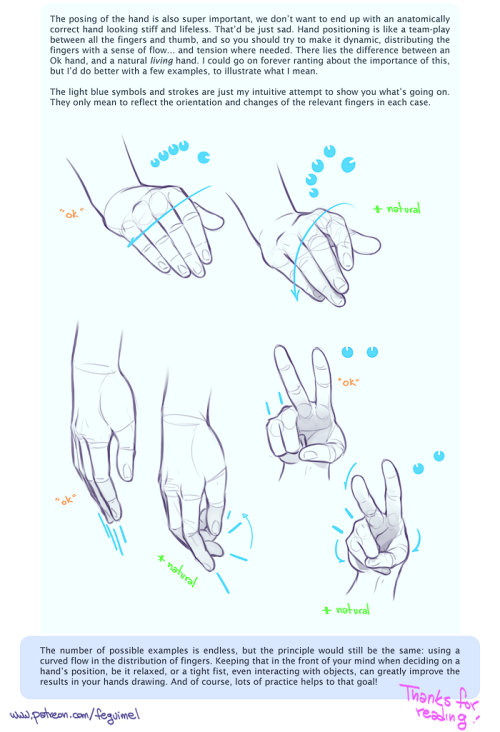
My first shot at creating a sort of tutorial/guide, telling how I do things. On this initial chapter we’re going over the handy matter of Hands. Not meaning to be an encyclopedic explanation, only showing my own methods and self-taught clues. Hoping somebody finds it useful! :3 I’ll do more if this one is received well. So let me know~
My thanks also to the supporters in my Patreon campaign, who helped me decide which themes to focus on for a start. And are actually allowing this to happen. :D Cheers!
Webcomic tips
In the conclusion for now, some things I’d really recommend doing if you’re seriously considering making a webcomic (or really a comic in general). Some of these don’t really apply to strips or gag-a-day type of comics, but I’m not talking about those here.
1. Write down ideas\sketch stuff, LEGIBLY. “I’m gonna remember it later” NEVER works. And if you scribble it somewhere on a piece of paper, you’d better scan it or retype in one doc later, because tiny notes always get lost among other doodles in my skethbooks.

(i know it’s hard to keep everything clean and organized, but this mess is just not productive)
If your project is a collaboration, save your conversations. If you’re working alone, make a blog for your ramblings. You have no clue what tears of relief I cry when I open that blog and rememeber I don’t have to painstakingly look through my heaps of sketchbooks and folders for a tiny idea I’m not even sure I wrote down a few months ago.
2. Inspiration folders, or even better, inspo blog with tags also help with collecting and remembering ideas. Color schemes, landscapes, style inspirations, atmospheric stuff, maybe some photo references, all those neat things.

3. Basic tier: character design sheets. Top tier: common poses, expressions. God tier: outfits they wear throughout the comic. Holy cow tier: turnaround sheets for all those outfits.

(I’d die trying to find good pages for references without these)
4. If you haven’t finished detailing the plot, don’t even think about moving on to drawing the comic. You’re gonna regret it when you come up with a really cool plot element that can’t be incorporated anymore because you’ve already drawn all the parts you could’ve tweaked.
5. Don’t just define the plot, make a script. Writing down the lines and the brief description of the actions serves me fine:

(notice that I approximately divided the pages & the text that’d go to each panel on a page)
6. Hard mode: make thumbnails for all the pages, if possible. At least whenever a new chapter starts.
7. If your story involves some convoluted chronology shenanigans, you’d better write down the events of your timeline in the chronological order.
8. Backgrounds. You can’t avoid them, bro. Like half of the comics are backgrounds, especially if your story involves a lot of adventuring and looking around. I know it hurts, but you’ll have to become friends with them. Read some tutorials, practice on photos, go out and sketch some streets, use 3d programs (like Google Sketch) to understand the perspective, use sites like houseplans to visualize your buildings better, I don’t know. Just be prepared for their imminent evil.
9. If you’re drawing digitally, pick a brush size for the lines and stick with it. You don’t want your lines and detail levels to look all wonky and inconsistent in different panels. And I don’t mean the cool stylistic varying lines, I mean this:

Also, things on the background should have thinner and/or lighter lines to avoid distraction. Usually less details too, unless you’re making a busy background with a simple foreground to help it pop out. Or wanna draw the attention to an object on the bg.

10. Readable fonts. Even if you chose to ignore people with poor sight or dyslexia, the majority of your readers aren’t gonna be excited about struggling to decypher this:

Also, as much as I love my black speech bubbles, colorful text on black still kinda hurts the eyes. I wouldn’t recommend doing that for all the characters. Black speech bubbles are usually used for creepy, inhuman voices. And yes, having a colorful outline in this case helps.
11. Probably newsflash, but did you know that panels have their place, order and functions? They do! My favourite thing ever is how I used panels when I was like 12:

(comics ain’t rocket science, but this one is)
The composition of the panels and word balloons always serve for a better reading experience. They guide your eyes over the page, so that you never feel lost or confused. The images in the comic equal frames in a movie, so it’s pretty damn important in what order you look at things and how quickly you can understand what’s going on!

(Eric Shanower & Scottie Young’s Wizard of Oz)
12. One update a week is fine for testing waters. Don’t overestimate yourself, especially if you have a pretty busy life outside it. A stable comic that updates slowly, but regularly is better than an unpredictable erratic one. You can always pick up the pace later, if you feel confident enough.
13. Try to always have a buffer - a couple of pages in reserve. If you’re making the pages much faster than you’re updating, this shouldn’t be a problem. But if those paces are equally the same, it’s goddamn HARD. But on the other hand, if something happens and you skip an update, those come in handy.
If you’re looking at this list and thinking “wow that’s a LOT of work”, you’re totally right. And it’s okay to be intimidated at first! But that’s why it’s important to start with something small. Once you get the formula down, these things will be natural to you.
-
 arthelpcollections reblogged this · 5 years ago
arthelpcollections reblogged this · 5 years ago -
 amstrashblog liked this · 6 years ago
amstrashblog liked this · 6 years ago -
 vzbakdnngksl reblogged this · 6 years ago
vzbakdnngksl reblogged this · 6 years ago -
 a-regular-art-tutorial-blog reblogged this · 7 years ago
a-regular-art-tutorial-blog reblogged this · 7 years ago -
 ptartrefs reblogged this · 8 years ago
ptartrefs reblogged this · 8 years ago -
 abigdogus-blog reblogged this · 8 years ago
abigdogus-blog reblogged this · 8 years ago -
 tattoosingarishhues liked this · 8 years ago
tattoosingarishhues liked this · 8 years ago -
 aerstic-spire reblogged this · 8 years ago
aerstic-spire reblogged this · 8 years ago -
 m00nbait liked this · 8 years ago
m00nbait liked this · 8 years ago -
 fallenlamp reblogged this · 9 years ago
fallenlamp reblogged this · 9 years ago -
 fryda16 liked this · 9 years ago
fryda16 liked this · 9 years ago -
 wintermanworld liked this · 9 years ago
wintermanworld liked this · 9 years ago -
 cyberdragoninfinity liked this · 9 years ago
cyberdragoninfinity liked this · 9 years ago -
 puppysoft liked this · 9 years ago
puppysoft liked this · 9 years ago -
 vvizardz liked this · 9 years ago
vvizardz liked this · 9 years ago -
 lars-barriga liked this · 9 years ago
lars-barriga liked this · 9 years ago -
 havocs-archived reblogged this · 9 years ago
havocs-archived reblogged this · 9 years ago -
 missmamibee liked this · 9 years ago
missmamibee liked this · 9 years ago -
 mcblooop liked this · 9 years ago
mcblooop liked this · 9 years ago -
 coffeejelli-blog liked this · 9 years ago
coffeejelli-blog liked this · 9 years ago -
 howltercuties-blog liked this · 9 years ago
howltercuties-blog liked this · 9 years ago -
 clinkerthecat reblogged this · 9 years ago
clinkerthecat reblogged this · 9 years ago -
 geekyglow liked this · 9 years ago
geekyglow liked this · 9 years ago -
 its-darkoverhere liked this · 9 years ago
its-darkoverhere liked this · 9 years ago -
 nactare liked this · 9 years ago
nactare liked this · 9 years ago -
 cannibalisticmusing reblogged this · 9 years ago
cannibalisticmusing reblogged this · 9 years ago -
 sexyminion liked this · 9 years ago
sexyminion liked this · 9 years ago -
 lolitajohnadams-blog liked this · 9 years ago
lolitajohnadams-blog liked this · 9 years ago -
 grunklestanofficial liked this · 9 years ago
grunklestanofficial liked this · 9 years ago -
 minteafresha reblogged this · 9 years ago
minteafresha reblogged this · 9 years ago -
 default-nerd reblogged this · 9 years ago
default-nerd reblogged this · 9 years ago -
 mycrophobic liked this · 9 years ago
mycrophobic liked this · 9 years ago -
 keiggerson reblogged this · 9 years ago
keiggerson reblogged this · 9 years ago
NSFW because there will probably be nude refs | this is a side blog to sort all of the art stuff I need | none of it is mine
151 posts

